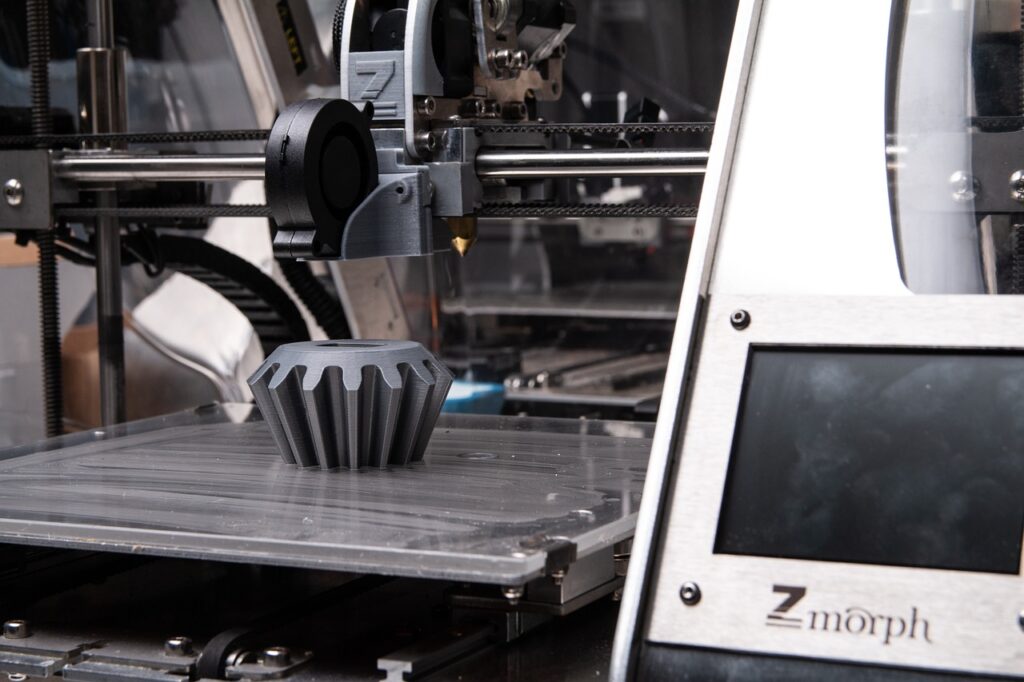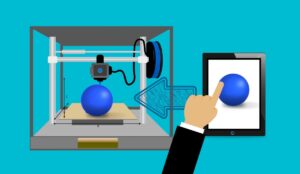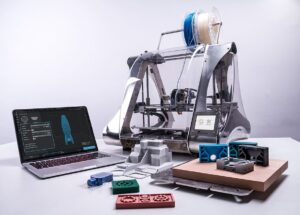Table of Contents
Introduction
The rise of 3D printing in Chennai is a testament to the city’s growing technological prowess. Once considered a futuristic concept, 3D printing is now revolutionizing various industries across Chennai. But why has Chennai become a hotspot for this innovative technology?

History of 3D Printing in chennai
Evolution Over the Decades
Since its inception, 3D printing has evolved significantly. Initially used for simple plastic prototypes, it now caters to complex metal parts and is widely adopted in sectors such as healthcare and aerospace. This evolution has made 3D printing more accessible and versatile.
Understanding 3D Printing Technology
How 3D Printing Works
At its core, 3D printing involves creating a three-dimensional object by layering materials based on a digital design. Starting with a 3D model created using CAD software, the printer reads the design and layers material until the object is complete.
Different Types of 3D Printing Technologies
- Stereolithography (SLA): Uses UV light to cure layers of photopolymer resin.
- Selective Laser Sintering (SLS): Fuses powdered material using a laser.
- Fused Deposition Modeling (FDM): Extrudes melted thermoplastic to build objects layer by layer.
- Direct Metal Laser Sintering (DMLS): Similar to SLS but for metal powders.
- Multijet Fusion (MJF): For high quality production grade plastic parts
The 3D Printing Industry in Chennai
Key Players and Startups
Chennai is home to several key players in the 3D printing industry. Companies like Primaeam and 3Ding, are driving innovation and making 3D printing accessible to a broad audience. These startups are crucial in promoting the growth of this technology in the city.
Government Initiatives
The Tamil Nadu government has recognized the potential of 3D printing and is supporting the industry through various initiatives. These include subsidies, innovation hubs, and partnerships between academia and industry, fostering a conducive environment for growth.

Applications of 3D Printing in Chennai
In Healthcare
In Chennai, 3D printing is transforming healthcare. Hospitals are using it for patient-specific implants, prosthetics, and surgical planning, leading to improved outcomes and cost reductions.
In Education
Educational institutions in Chennai are integrating 3D printing into their curriculum. This hands-on approach prepares students for future careers in engineering, design, and manufacturing, equipping them with essential skills.
In Manufacturing
Manufacturers in Chennai leverage 3D printing for rapid prototyping, reducing the time and cost involved in product development. This technology enables the creation of complex geometries that traditional methods cannot achieve.
In Art and Design
Artists and designers in Chennai are exploring 3D printing to push creative boundaries. From intricate jewelry designs to large-scale sculptures, 3D printing offers new possibilities for artistic expression.
Advantages of 3D Printing
Cost Efficiency
3D printing significantly reduces production costs, especially for small runs and prototypes. It eliminates the need for expensive molds and tooling, making it an economical choice.
Customization
One of the most significant advantages of 3D printing is the ability to create customized products tailored to individual needs. This is particularly beneficial in healthcare and consumer goods.
Speed of Production
3D printing produces parts much faster than traditional manufacturing methods. This speed is crucial in industries where time-to-market is a critical factor, providing a competitive edge.
Challenges and Limitations
Technical Challenges
Despite its advantages, 3D printing faces technical challenges. These include limitations in material properties, surface finish quality, and the size of printable objects, which can hinder its widespread adoption.
Economic Barriers
The initial cost of 3D printers and materials can be high, posing a barrier for small businesses and startups. Overcoming these economic barriers is essential for broader adoption.
Regulatory Issues
Regulatory hurdles, especially in industries like healthcare, where standards and approvals are stringent, can slow down the adoption of 3D printing. Addressing these issues is vital for the technology’s growth.
The Future of 3D Printing in Chennai
Emerging Trends
Chennai is poised to lead several emerging trends in 3D printing. These include bioprinting, which involves printing with biological materials to create tissues and organs, and the use of advanced materials like graphene, which offer new possibilities.
Potential for Growth
The potential for growth in Chennai’s 3D printing industry is immense. With continued investment and innovation, Chennai could become a global leader in this technology, driving further advancements and applications.
Conclusion
Chennai is rapidly becoming a hotspot for 3D printing innovation. With a strong ecosystem of startups, supportive government policies, and a growing talent pool, the city is well-positioned to harness the full potential of this technology. As 3D printing continues to evolve, Chennai’s role in this exciting journey is only set to grow.
FAQs
What is 3D Printing?
3D printing is a process of creating three-dimensional objects from a digital file, layer by layer, using various materials.
How is 3D Printing Beneficial?
3D printing offers benefits like cost efficiency, customization, and faster production times.
Who are the Major Players in Chennai’s 3D Printing Scene?
Some key players include Crenodez Engineering Solutions, 3Ding, and Primaeam.
What are the Challenges of 3D Printing?
Challenges include technical limitations, high initial costs, and regulatory hurdles.
What Does the Future Hold for 3D Printing in Chennai?
The future is bright with potential growth in bioprinting, advanced materials, and increased industry adoption.



